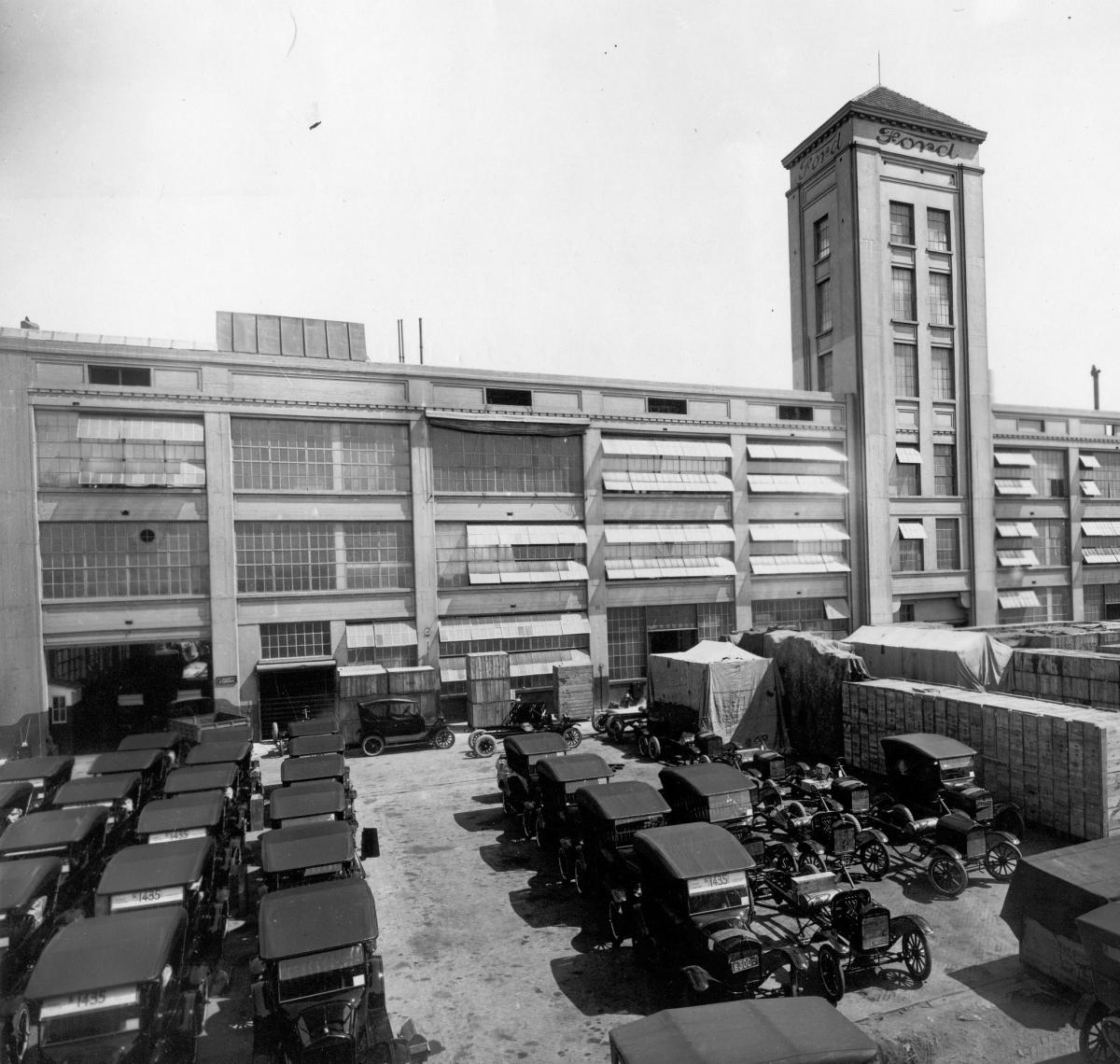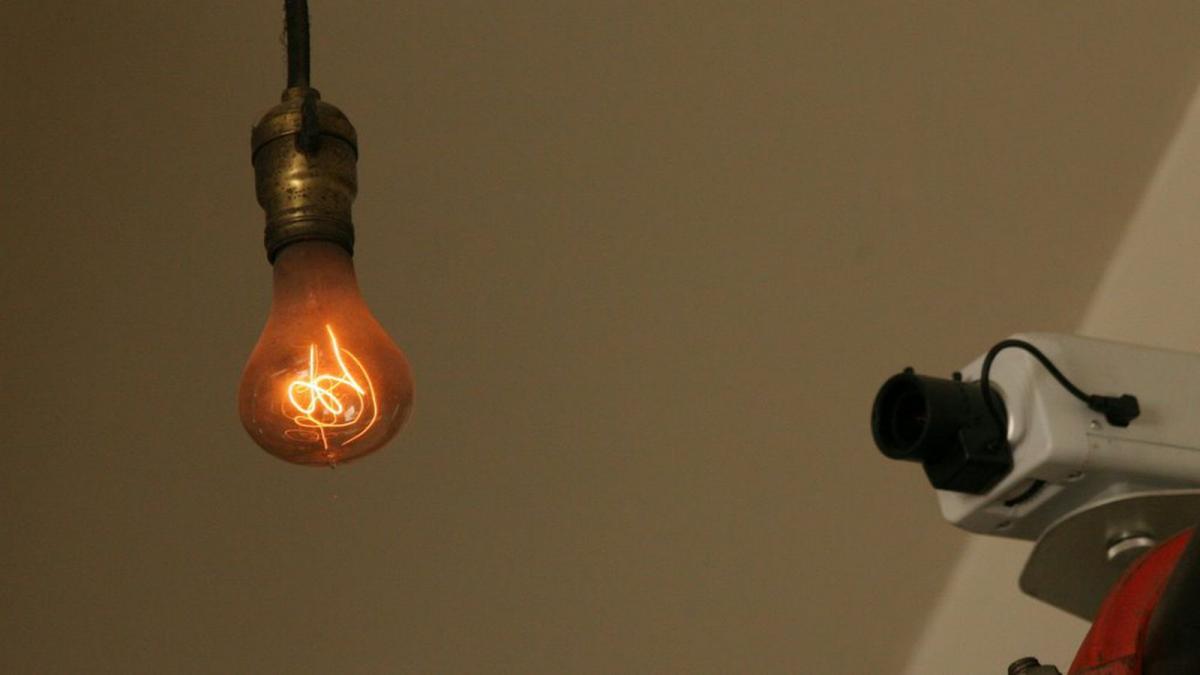Designing Things to Last
Today many people throw things away, not because they are unusable, but because we want to replace them with the latest style. It keeps the wheels of industry turning and designers in business, but also bloats our landfills and destroys the environment. What are the alternatives, and can we learn to embrace them?
Cover Photo: The W123 was the most successful Mercedes ever, and 2.7 million of them were sold before the model was succeeded by a newer one in 1985. It was widely considered one of the most reliable and durable cars of its time, but its multiple technical innovations also made it prone to technical failures. (Photo curtesy of Mercedes-Benz)
If you ask Jan Nielsen, his family’s Mercedes-Benz W123 saloon should have been built to last. Manufactured in the mid-1970s, it was very much a grand showpiece, and wherever they went in it, they would arrive in style. It was also a robust machine, like a block of granite… until it had a fault that proved difficult to repair.
‘We started having problems with the water pump and this led to a coolant leak. But when it came to fixing it, the local service centre didn’t have the part needed in stock and told us they didn’t expect to carry it ever again,’ Nielsen recalls. ‘It turns out that supplies of old parts start to dry up a few years after a manufacturer stops production of a model. We could have ordered the part needed from a secondhand dealer and got it shipped, but there was no guarantee that the part received was going to be in good working condition.
And the service centre couldn’t say for sure whether they’d have the right equipment to fit it anyway.’
In the end, and to save money and hassle, Nielsen decided they should cut their losses and sell it on. It’s a dilemma many drivers have faced over the years because, quite simply, cars aren’t designed to last. From a manufacturing point of view, this approach makes business sense, because if there was a never-ending supply of parts and every vehicle could be fixed easily, then every car would be a lifelong investment, which wouldn’t be economically viable for carmakers, so planned obsolescence is a part of their design.

The practical and affordable Ford Model T changed the way Americans live and travel. Thanks to Henry Ford’s advancements in assembly-line manufacturing, it was the first car accessible to the masses, who bought more than 15 million of them between 1913 and 1927. The Model T’s low cost, durability, versatility, and ease of maintenance made it a symbol of America’s age of modernisation. Ford rejected the planned obsolescence practised by its competitors, but later lost market share to cars that were larger, more expensive and more design-driven. (Photo courtesy of La Nación, Buenos Aires.)
Planned obsolescence is defined as a business strategy in which old models and parts are discontinued and new models and parts are introduced, perhaps with incremental changes, making the older ones look outdated and ensuring constant demand. The term was first used in 1932 by a real estate broker, Bernard London, who wanted to encourage spending to bring the USA out of the Great Depression. He noted in his famed essay ‘Ending the Depression Through Planned Obsolescence’ that prior to the collapse of the economy, people were giving up their vehicles ‘before they were worn out’, whereas times of scarcity saw them ‘disobeying the law of obsolescence, […] using their old cars and their old clothing much longer than statisticians had expected based on earlier experience’.
Planned obsolescence as we know it today, though not precisely as London imagined it, had already been introduced on a large scale in the automotive industry during the Roaring Twenties, a time when the Ford Model T was the car that had the world motoring. It was sturdy and reliable, and started rolling off the Detroit factory’s production line in 1908, with 15 million of them going on to be produced over the next 19 years. Though it originally came in a number of colours including green, maroon, bright red and dark blue, Henry Ford, upon realising the huge demand for the car, famously decided that it should come in ‘any colour, as long as it’s black’, because black paint dried quickly and production speed was of the essence. For more than a decade, the Model T came in just one colour, and by the late 1920s, General Motors (GM) had started to capitalise on Ford’s inertia by releasing models on an annual basis, creating a perception that each new one was better than the previous one. Eventually, as the market became saturated, the Model T ran out of gas.
‘We cannot conceive how to serve the customer unless we make for him something that, so far as we can provide, will last forever. […] It does not please us to have a buyer’s car wear out or become obsolete. We want the man who buys one of our cars never to have to buy another. We never make an improvement that renders any previous model obsolete.’ — Henry Ford, 1922
“Our big job is to hasten obsolescence. In 1934 the average car ownership span was 5 years, now it is 2 years. When it is 1 year, we will have a perfect score.” — Harley Earl, head of design GM, 1955
In his 1963 autobiography My Years with General Motors former CEO Alfred P. Sloan said that ‘The changes in the new model should be so novel and attractive as to create demand for the new value and, so to speak, create a certain amount of dissatisfaction with past models as compared with the new one.’
Although this strategy had been implemented in the twenties and named in the thirties, it wasn’t until 1954 that the term ‘planned obsolescence’ was actually popularised by an American industrial designer, Brooks Stevens. He defined it as ‘instilling in the buyer the desire to own something a little newer, a little better, a little sooner than is necessary’.
You seem to enjoy a good story
Sign up to our infrequent mailing to get more stories directly to your mailbox.Around the same time, credit cards in their earliest form were becoming a popular way for people to spend money that wasn’t at their disposal. Even poorer people were now able to buy products they previously considered unattainable: home appliances, cookers, radios and colour televisions, once a luxury purchase only the well-off could afford, but now becoming increasingly commonplace.
This newfound buying power meant that manufacturers could increase production and could even release new and updated models, encouraging customers to buy what they didn’t need, even if it meant borrowing more credit, artificially boosting the economy and maintaining employment.
The history of the Phoebus Cartel has cast something of a shadow over the lighting industry.
Even the humble incandescent light bulb was the subject of a great planned obsolescence conspiracy during the 1920s and 1930s when a group of international businessmen known as the Phoebus Cartel colluded to engineer bulbs with dramatically shortened life spans. Bulbs that had once burned for 1,500 to 2,500 hours now lasted for only half that, which meant increased sales, and because of reliable demand, since lightbulbs were a necessity rather than a luxury purchase, companies could also artificially inflate prices.
Today, incandescent light bulbs remain virtually unchanged from their late-1800s form, though they have often been criticised. In 2009, the EU began phasing them out in favour of energy-efficient ones, and other regions have taken similar measures. From the end of 2018, halogen lamps, which, like incandescent bulbs, use a tungsten filament, will also cease to be sold, forcing consumers to make the switch to other technologies like LEDs. These more expensive bulbs are marketed as being up to ten times as efficient, but as a 2010 documentary, The Great Light Bulb Conspiracy, points out, whether they last a fantastically long time remains an unanswered question. Doubts also linger over whether they are the most sustainable solution, but at the moment they are the best mass-produced alternative on the market.

The Centennial Light, the world’s longest-lasting light bulb, has been burning continuously since 1901, giving more than 1,000,000 hours of light. This seemingly ordinary lightbulb in the fire station of the small Californian village of Livermore is often cited as evidence for the planned obsolescence in modern lights, whose lifespans are routinely quoted at 25,000 to 50,000 hours. Round-the-clock webcam broadcasting of the bulb’s uneventful life began sixteen years ago, and has already burned out three cameras. (Photo: Wikipedia Commons)
Another option that is being explored is not a product but a model: selling light as a service. Pay-per-lux, as it’s known, is being pioneered by Frans van Houten, CEO of Dutch company Royal Philips, and circular economy visionary and architect Thomas Rau. It’s based on the principle that people should only pay for what they consume, so rather than owning any lighting products, they simply pay a fee to a third party to handle the installation, maintenance and upgrades. While a number of businesses have signed up for the service, it’s hoped that in time it could be offered to households and eventually transform the whole market.

Architect Thomas Rau worked with Philips Lighting to develop a new business model for Amsterdam’s Schiphol Airport. Normally the airport would expect to buy fixtures and cables that would eventually have to be replaced and disposed of, but Rau proposed a pay-per-lux model in which the lights are owned and maintained by Philips, and the airport pays by the exact amount of illumination in each space. Not only is this solution sustainable and cost-effective, but it enables the manufacturer to deliver durable products for which there is currently no business model. (Photo courtesy of Philips Lighting.)
For households to turn their backs on such familiar products will require a shift in mindset. ‘Consumers are conditioned to buy them, and retailers and the like are conditioned to sell them,’ says Tom Lawton, inventor of the Million Mile Light, a safety light for joggers and dog walkers that harnesses energy from footfall to power small LEDs and is designed to last forever. Lawton hasn’t had the easiest of times getting the niche product into the hands of people, partly because retailers are wary of stocking it, which means that sales have to be driven through their online profile. ‘We’ve had positive feedback from potential buyers about the design, the price point and our branding. But not a single retailer has taken the product on. Why? A few running store managers told us in confidence and admitted it’s more profitable to sell cheaper throwaway lights that customers don’t particularly care for. If they lose it or throw it away when the batteries run out, they’ll simply buy another one.’

The Million Mile Light is a wearable battery-free LED light powered by motion. The technology for the small kinetic engine that harvests the energy from the wearer’s motion has been around for years, but it doesn’t seem to be a popular product for distributors given that the device is projected not to need any replacements in its lifetime. (Photo courtesy of Million Mile Light.)
In an ideal world, Lawton says, companies and manufacturers would do business on the principle of people buying fewer but superior products which would be required to have a certain level of durability and repairability. Products would cost more, but because they would last far longer than existing ones, they would be seen as a worthwhile investment. ‘However, the narrative of planned obsolescence goes much deeper than engineering products like running lights that never give up,’ he adds. ‘This story is about the bigger picture of what underpins our throwaway culture and, for me at least, the problem is the pursuit of short-term profit rather than longer-term objectives.’ To reach the point where products are being manufactured to be more durable and reliable would require designers to think about life cycles and endings. Right now, designers excel at on-boarding consumers and persuading them to commit to a particular product or service through advertising and branding, yet bad at off-boarding them, says Joe Macleod, author of Ends. (Why We Overlook Endings for Humans, Products, Services and Digital. And Why We Shouldn’t) who has worked in mobile phone design since the late 1990s, including a stint at Nokia. This failure to off-board means that endings aren’t part of the consumer experience and so ‘we buy things on a whim, impulsively, to satisfy an emotional desire’, without thinking about the impact consumptions are having once a product reaches the end of its life. As a result of ‘wanting to experience new purchases, we fail to reflect on the long-term consequences and so products continue to be designed with shortened life spans’.
I told Philips, ‘Listen, I need so many hours of light in my premises every year. If you think you need a lamp, or electricity, or whatever—that’s fine. But I want nothing to do with it. I’m not interested in the product, just the performance. I want to buy light, and nothing else.’ — Thomas Rau
By failing to acknowledge the importance of endings, designers and manufacturers lose the ability to improve them. ‘Approaches like cradle-to-cradle and the circular economy have aimed to create products and services that are less damaging, but often miss a chance to hone in on the consumer experience,’ Macleod says. ‘They’re aimed instead at neutralising the damage of materials and the breakdown that the chemistry of these physical systems has on the environment.’
If consumers were aware of endings, it would change their relationship with products, helping them rethink what constitutes a good buy, particularly regarding electronic devices. Smartphones, tablets, computers and the like are being continuously updated with faster processors and better software thanks to tireless innovation, and this isn’t necessarily done to exploit consumers, but is rather a part of companies’ ongoing battle for market share. On the other hand, keeping product cycles short and repair charges high contributes to the perception that it’s better to buy new models than fix old ones. If a faulty button, cracked screen or fading battery didn’t mean the entire product needed replacing, consumers wouldn’t be discarding their devices as often. Nearly half of all smartphones suffer a premature death and the majority of these end up in landfills, where toxins such as mercury, lead and cadmium can leak into the soil and groundwater and eventually find their way into the food chain.
‘This is why we need products to have coherent and reflective endings,’ Macleod says. ‘A well-designed and well-managed off-boarding will create reflection and responsibility for the consumer in regard to their consumption.’
If consumers became aware of the impact that their purchasing habits have, both on the environment and on companies’ design strategies, they could respond by turning around and demanding action. Sales of inferior products would drop, and manufacturers would have to re-evaluate their products, designing out factors that shorten life spans, and designing in more robust elements that last longer or are easier to repair.
Enabling consumers to demand action on an industry-wide scale is easier said than done. There are flickers of hope, however, such as emerging networks of repair workshops and cafés where people can go to learn how to fix electronic devices and household appliances and bring them back to life. They actively encourage participants to remove warranty stickers or seals, since warranty terms generally prevent consumers from trying to fix their own devices and force them to either pay for authorised repairs or buy an updated model. By voiding these warranties, consumers terminate their relationships with the manufacturers, but begin new relationships with their devices, empowering themselves not only to repair them, but also to hack and customise them.
According to Janet Gunter, co-founder of the London-based Restart Project, while repairs can be difficult, they’re not impossible. Consumers see warranty stickers and warnings and fear what will happen once they’ve prised the back off their devices, but this is more out of ignorance of electronics, because with a bit of creativity and tinkering, ‘obsolete’ products can be restored. ‘We need to open up our devices and learn exactly what needs to change; only then will we have the knowledge to demand action from manufacturers,’ Gunter says. Gunter is part of a growing movement across Europe and the USA. The Restart Project has been going since 2012 and now runs Restart Parties up and down the UK, inviting communities to gather and fix their relationships with their electronics. To date, the events have led to 4,445 kg (9,800 lbs) of electronic waste being kept from entering landfills and prevented 95,602 kg (210,766 lbs) of CO₂ emissions as a result, which is equivalent to the emissions that would be produced by the manufacture of sixteen cars. It’s a small drop in the ocean of global waste, but there is an increasing number of people across the world who are waking up to the tactics that companies use to get them to buy again and again and who are subsequently taking an interest in extending the lives of their products.
‘We know that there are consumers who have a deeper desire for durable, reliable and long-lasting products, but the challenge is how to raise awareness and get the message out there so others can learn,’ Lawton says. ‘Planned obsolescence is just lazy thinking. We should be designing with planned endurance in mind.’

